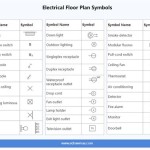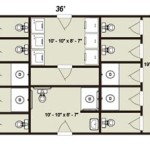Essential Aspects of Modern Slope House Plans
Designing a house on a slope can be a unique and rewarding challenge, providing opportunities for creative and functional home designs. Modern slope house plans embrace the challenges of sloping terrain, transforming them into architectural advantages that maximize views, optimize natural light, and blend seamlessly into the surrounding environment.
Site Analysis and Orientation
Before designing a slope house, a thorough site analysis is crucial. This involves evaluating the slope's gradient, soil conditions, drainage patterns, and potential for flooding. The orientation of the house should be carefully considered to take advantage of natural light and views, while minimizing energy consumption.
Foundation and Structural Design
The foundation of a slope house must be designed to withstand the forces of the sloping terrain. Common foundation types for slopes include concrete piers, stem walls, and reinforced concrete slabs. The structural system should provide adequate support and stability, ensuring the house remains structurally sound over time.
Multi-Level Design
Slope house plans often incorporate multi-level designs to accommodate the varying elevations of the terrain. This allows for distinct living areas, such as bedrooms on higher levels and living spaces on lower levels, while maintaining a cohesive flow throughout the house.
Maximize Views and Natural Light
One of the key benefits of a slope house is the potential for stunning views. Large windows and sliding glass doors can be strategically placed to capture panoramic vistas. The design should incorporate natural light into the living spaces, reducing reliance on artificial lighting and creating a sense of openness and spaciousness.
Outdoor Living Spaces
Slope houses offer ample opportunities for outdoor living spaces. Terraces, balconies, and patios can be incorporated into the design to extend the living areas outdoors and take advantage of the natural surroundings. These spaces can provide privacy, relaxation, and entertainment areas.
Water Management and Drainage
Proper water management is essential for any slope house. The design should include gutters, downspouts, and drainage systems to divert rainwater away from the foundation and prevent erosion. Retaining walls and berms can be utilized to stabilize slopes and ensure long-term durability.
Sustainability and Energy Efficiency
Modern slope house plans often prioritize sustainability and energy efficiency. The use of energy-efficient appliances, insulation, and renewable energy sources can minimize the environmental impact of the house. Passive solar design techniques can be incorporated to take advantage of the sun's heat and reduce energy consumption.
Conclusion
Slope house plans offer a unique opportunity to create stunning and functional homes that embrace the challenges of sloping terrain. By carefully considering site analysis, foundation design, multi-level design, and outdoor living spaces, architects can create modern slope houses that maximize views, optimize natural light, and blend seamlessly into the surrounding environment.

Modern House Plans For Sloped Lots Fresh 29 Best Steep Slope Images On Sloping Lot Plan

Modern Style House Plan 4 Beds 3 5 Baths 3056 Sq Ft 498 6 Beach Flooring Plans Sloping Lot

Sloped Lot House Plans With Walkout Basements At Dream Home Source Unique Modern Architecture

Hillside House Plans With Garages Underneath Houseplans Blog Com

Hillside House Plan Makes Contemporary Look Earthy

82 Sloped House Ideas Slope Architecture Design

Plan 43939 Modern Mountain House With Window Wall

Hillside House Plan Modern Daylight Home Design With Basement

Ocho House Sloping Lot Plan Slope Hillside

Plan 80780pm 2 Bed Modern House For Sloping Lot Plans Design








